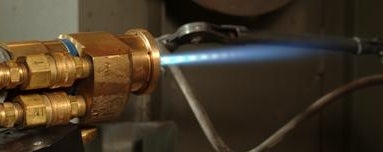 "and 100 more" (nth256)
"and 100 more" (nth256)
12/03/2015 at 13:56 ē Filed to: None
 4
4
 10
10
 "and 100 more" (nth256)
"and 100 more" (nth256)
12/03/2015 at 13:56 ē Filed to: None |  4 4
|  10 10 |
!!! UNKNOWN CONTENT TYPE !!!
Interesting idea!
 vondon302
> and 100 more
vondon302
> and 100 more
12/03/2015 at 14:03 |
|
Why couldnít they just sleeve it? Like weíve been doing for the last 80 years.
 and 100 more
> vondon302
and 100 more
> vondon302
12/03/2015 at 14:12 |
|
I dunno. I think it applies beyond cylinder linings, tho the article does specifically mention that application.
 vondon302
> and 100 more
vondon302
> and 100 more
12/03/2015 at 14:16 |
|
I know they do this on the 5.0 coyote motors when there new. Maybe there looking at a way to rebuild the current crop of motors cheaply. Iíve heard the coyote ainít cheap to sleeve.
 Wacko
> and 100 more
Wacko
> and 100 more
12/03/2015 at 14:44 |
|
should work, hey Nissan is refurbing old F150s and slapping a Nissan badge on them.

 Urambo Tauro
> and 100 more
Urambo Tauro
> and 100 more
12/03/2015 at 15:02 |
|
Is this just for their remanufactured crate engines and warranty repairs? Or are they looking to put these in brand-new vehicles, too?
 and 100 more
> Urambo Tauro
and 100 more
> Urambo Tauro
12/03/2015 at 15:40 |
|
The article says that itís a process thatís being used on new engines currently, but Fordís plan is to use it on used engines. Now, to what extent ďusedĒ the article doesnít say, but I would assume vintage/rebuilt engines (as a separate service), warranty repairs (if this particular treatment is applicable to the scenario), and as a performance upgrade for crate engines.
Again, only my assumption.
 gmporschenut also a fan of hondas
> vondon302
gmporschenut also a fan of hondas
> vondon302
12/03/2015 at 22:23 |
|
you can run into problems with sleeving if there isnít sufficient thickness between the cylinders. There is also the issue with differnt expansion rates of different metals.
 gmporschenut also a fan of hondas
> and 100 more
gmporschenut also a fan of hondas
> and 100 more
12/03/2015 at 22:39 |
|
Cool Though the process isnít cheap. yet it could give a cost reduction in eliminating the need for a highly precise sleeves. Just clean, blast, and machine the surface.
Itís been done in the aircraft industry for decades.
One variation of the technology even has the nozzle produce shock diamonds.

 gmporschenut also a fan of hondas
> vondon302
gmporschenut also a fan of hondas
> vondon302
12/03/2015 at 22:42 |
|
kinja wont let me edit the benefit is that you donít have to buy 4, 6, or 8 machined sleeves.
 vondon302
> gmporschenut also a fan of hondas
vondon302
> gmporschenut also a fan of hondas
12/04/2015 at 05:53 |
|
Yeah just found out sleeving a coyote isnít cheap.